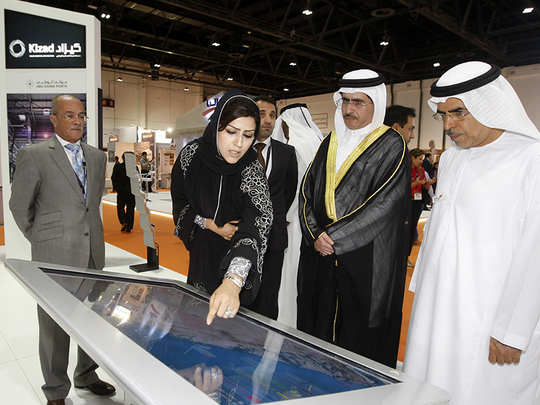
Dubai: The volume of aluminium production in the Gulf region is expected to increase to five million tonnes in 2015, accounting for around 10 per cent of total global output of 55.01 million tonnes, due to new smelters and the expansion of existing ones.
In 2014, the Gulf region produced 4.83 million tonnes while 53.06 million tonnes were produced globally.
Saeed Mohammad Al Tayer, Vice-Chairman of Emirates Global Aluminium and MD and CEO of Dubai Electricity and Water Authority (Dewa), after inaugurating the fourth edition of Aluminium Middle East 2015 on Tuesday, told Gulf News that UAE has no plan to increase its production capacity of 2.4 million tonnes this year.
“That is the maximum production capacity and we will continue it for the time being,” he said.
According to an industry expert, the UAE produced 2.3 million tonnes last year and is nearing maximum capacity.
On whether UAE plans to set up more refineries, Al Tayer said: “No comment”.
He said the current production capacity is enough to meet the needs.
“We supply 300,000 tonnes to the local market and the rest is exported to 35 countries,” he said.
The UAE is the world’s fourth largest aluminium producer, accounting for over 50 per cent of the Gulf’s aluminium production, with exports worth $3.9 billion.
Abdullah bin Kalban, CEO and Managing Director of Emirates Global Aluminium (EGA), said that $15 billion has been invested between 2005 and now in improving the production capacity and has plans for $5 billion to be invested in the future to enhance capacity.
According to statistics, the Gulf industry is growing by 8.4 per cent annually, compared to an average annual global expansion of 3.5 per cent, making the Middle East the fastest growing aluminium market in the world.
The Gulf has six operating smelters — Alba, Dubal, Emal, Qatalum, Sohar and EGA.
The $3 billion alumina refinery in the capital by Emirates Global Aluminium (EGA), the world’s fourth biggest aluminium producer and formed from the merger between Emirates Aluminium (Emal) and Dubai Aluminium (Dubal), is expected to be operational by 2017 with a capacity to produce four million tonnes annually.
“As the Gulf sector continues to strengthen its share in the global market, it presents tremendous new opportunities for international industry players,” said Daniyal Qureshi, group exhibition director at Reed Exhibitions Middle East, organisers of the event.
He said that Gulf’s aluminium production is increasing by 8.4 per cent annually, compared to a global average of 3.5 per cent, making the Middle East as the fastest growing market in the world. The production capacity in Oman, Saudi Arabia and Bahrain is increasing considerably, apart from EGA and Emal.
According to a study by EC Harris, the UAE is projected to spend $329 billion on major construction projects by 2030. Big projects, which cost more than $1 billion, are due to peak in the UAE by 2016.












